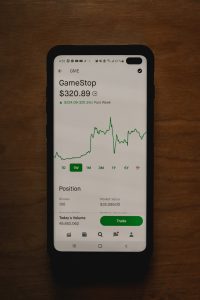Exploring the Different Types of Spreads in Forex Trading and Their Pros and Cons
When it comes to forex trading, understanding the different types of spreads is crucial. Spreads are the difference between the bid price and the ask price, and they play a significant role in determining the overall cost of trading. In this article, we will explore the various types of spreads in forex trading and discuss their pros and cons.
1. Fixed Spreads:
Fixed spreads, as the name suggests, remain constant regardless of market conditions. This type of spread is typically offered by market makers, who are the counterparties to traders. The advantage of fixed spreads is that they provide certainty and stability, allowing traders to plan their trades with ease. Additionally, fixed spreads tend to be narrower during periods of low market volatility, which can be beneficial for traders looking to execute trades quickly. However, fixed spreads tend to be wider during periods of high volatility, which can increase trading costs.
2. Variable Spreads:
Variable spreads fluctuate based on market conditions. They are typically offered by ECN (Electronic Communication Network) brokers, who connect traders directly with liquidity providers. The advantage of variable spreads is that they tend to be narrower during periods of low market volatility, which can result in lower trading costs. However, during times of high volatility, variable spreads can widen significantly, making it more expensive to execute trades.
3. Commission-based Spreads:
Some brokers offer spreads that are commission-based, meaning traders pay a separate fee for each trade they execute. This fee is often a fixed amount per lot traded. The advantage of commission-based spreads is that they tend to be very tight, especially when combined with variable spreads. This can result in lower overall trading costs, especially for high-volume traders. However, traders need to consider the commission fee in addition to the spread when calculating their total trading costs.
4. Zero Spreads:
Zero spreads, also known as raw spreads, are the tightest spreads available in the market. They are offered by brokers who charge a commission fee for each trade. The advantage of zero spreads is that they eliminate the spread cost entirely, resulting in lower trading costs. However, it’s important to note that zero spreads are typically only available for certain currency pairs and during specific trading sessions. Additionally, the commission fee charged by brokers can vary, so traders need to consider this when comparing different offerings.
So, what are the pros and cons of each type of spread?
Fixed spreads provide certainty and stability, which can be advantageous for traders who prefer to plan their trades in advance. However, they can be wider during periods of high volatility, increasing trading costs.
Variable spreads tend to be narrow during periods of low volatility, resulting in lower trading costs. However, they can widen significantly during times of high volatility, which can make trading more expensive.
Commission-based spreads, when combined with variable spreads, can result in very tight spreads and lower overall trading costs. However, traders need to consider the commission fee in addition to the spread when calculating their total trading costs.
Zero spreads eliminate the spread cost entirely, resulting in lower trading costs. However, they are typically only available for certain currency pairs and during specific trading sessions. Additionally, traders need to consider the commission fee charged by brokers when comparing different offerings.
In conclusion, understanding the different types of spreads in forex trading is essential for traders to make informed decisions. Each type of spread has its pros and cons, and traders need to consider their trading style, risk tolerance, and market conditions when choosing the most suitable spread type. By carefully evaluating the various options, traders can minimize their trading costs and maximize their potential profits in the forex market.






